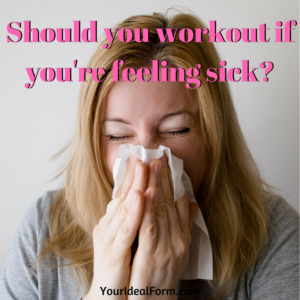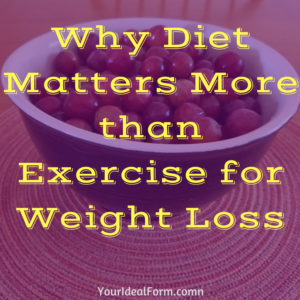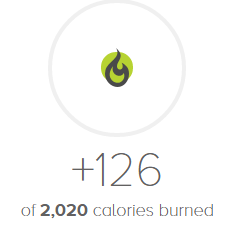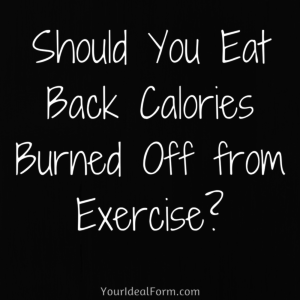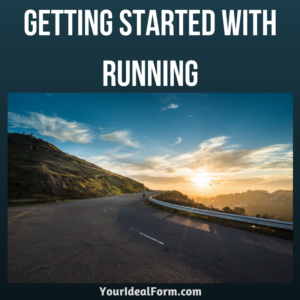
New year, new resolutions, lots of new people at the gym. Many people who resolve to lose weight think the best way to do so is by exercising, and the one exercise everyone knows how to do since they learned it at around three years old is how to run.
Caveat
I’m putting the not-so-fine print first. If your goal is to lose weight, you will get more bang for your buck by changing your eating habits rather than exercising. Running is fabulous exercise, it’s great for your health, and easily accessible to just about everyone since you don’t need a gym membership or super fancy equipment. But if I want a 200 calorie deficit in my day, I can either run 2 miles, or I can simply not drink a daily can of soda. As always, consult a doctor before beginning any exercise regimen.
Walk before you run
Runners always talk about that runner’s high and how much they love putting in the miles. And that’s true. There is a certain zen to just zoning out and focusing on nothing but the scenery and putting one foot in front of the other. That said, when starting out, running is HARD. To make sure you have a decent cardiovascular base for starting a running program, you should be able to walk at a brisk pace for 30 minutes without feeling like you’re going to die. If you cannot manage that yet, that’s okay! Work on adding a little time and distance, bit by bit until you can hit that 30 minute mark.
The all-in approach
Once you’re ready to start running, there are a couple of methods to increase the distance/time you can run. One method is to simply start running, and see how far you get. Spend the rest of the 30 minutes walking it out. Next time you go for a run, try to go just a teeny bit further, even if it’s one more driveway or 10 more seconds. Incrementally increase the time/distance you run until you can run for the full 30 minutes.
The couch to 5K approach
There are countless apps that will coach you through the famous “couch to 5k” program. In 8 weeks, the program takes you from not running, to running a full 30 minutes. It does this by alternating between walking and running. In the beginning, you walk for longer, with short bursts of running. As the weeks progress, the run intervals get longer, and the walks get shorter. Many people tend to have to repeat a week (when getting back into running after a very long hiatus, I also had to repeat a week), but it is nice to know that there’s a light at the end of the tunnel, as it were, for when you will hit the goal of running for 30 minutes, non-stop.
Either way
No matter which method you go with, there are some universal constants. When starting out, it is super important to have a rest day between your runs. Running is awesome, but it’s also a LOT of stress on your body, so be sure to give yourself time to recover. You will need to learn to breathe again. The toughest part when first starting out with running is getting the breathing down. That’s what stops most people; it’s not that their legs give out, it’s that they can’t get air. If you find this happening to you, try to focus on your breathing, and perhaps try slowing your pace down some. When I feel like I can’t breathe, I try to breathe in for x steps and then breathe out for x steps. How many steps equal x depends on your needs. Your body will eventually adjust, but it’s a bit of a shock to the system at first. No matter how fast you can walk, when you switch from walking to running, the breathing is completely different, and you’ll need to learn how to deal with it so you don’t get winded.
Preventing injury
It’s January. It may be snowy or icy where you live. Perhaps you live in a warm climate, but the sidewalks are just terrible. Perhaps you don’t have sidewalks and need to run in the street. Be aware of where you are putting your feet so that you don’t sideline yourself with an injury. If you are running in the street, wear reflective clothing and run against traffic, so you can see who is coming. One of the most common running injuries is shin splints. Shin splints are caused by the impact of running. Running on a dirt trail or rubber track can help minimize the impact, as can running on a treadmill. If this isn’t an option, try landing more toward the middle of your foot, rather than striking with your heel, and allow your ankle to do its job as a shock absorber to lessen the impact. Keep in mind, this will make your calf muscles VERY sore at first, until they get used to it.
The Shoes
The only real equipment you need to get started with running is a good pair of running shoes. There are MANY schools of thought on this one. The best shoe for you is one that you feel comfortable in, and doesn’t make your feet hurt or blister. Whether you need any sort of motion control or extra padding, or whether you prefer to go a minimalist route is up to you. If running in the same sneakers you’ve had for the past 20 years feels fine, then stick with it. If you’ve got some money to spend, and new gear will help keep you motivated, visit your local running shoe store, where a specialist can help you find a pair of shoes that works well with your particular feet and gait. Note: find a specialty running shoe store. Your general sporting goods store folks are nice people, but don’t have the specialized training to fit the right shoe to your foot.
Get out there!
Hopefully this information will help you get started if one of your goals this year is to get running. If you have any questions about running, let me know in the comments!
